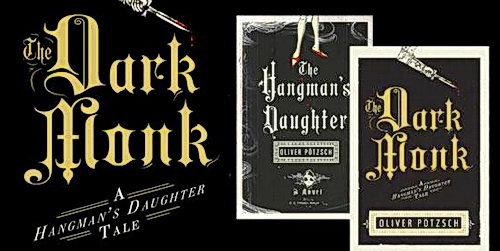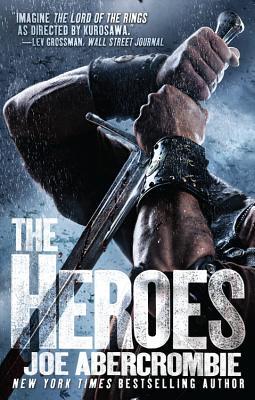Of Swords and Plumes 004: Oliver Pötzsch’s “Hangman’s Daughter” series
 The Hangman’s Daughter and The Dark Monk, by Oliver Pötzsch. Mariner, 2011 and 2012; reviewed in the trade paperback editions.
The Hangman’s Daughter and The Dark Monk, by Oliver Pötzsch. Mariner, 2011 and 2012; reviewed in the trade paperback editions.
“The Hangman’s Daughter” and “The Dark Monk” are the first two novels in a new historical mystery series by the German author Oliver Pötzsch. The stories are set in the back woods of Bavaria in the late 17th century, a largely unfamiliar setting (at least to me), and a refreshing change from the usual Elizabethan England or medieval France. It’s a few years after the end of the catastrophic Thirty Years War that devastated central Europe, and Germany is still pulling itself back together. Elsewhere, in the great European cities, the Enlightenment may be opening minds, but in the deep forests of Bavaria, the traditions of the Dark Ages still persist.
The small, backward city of Schongau is home to the series’ three protagonists: Jakob Kuisl, the town’s hangman, who also acts as its interrogator and torturer; his determinedly unorthodox daughter, Magdalena Kuisl; and her reluctant lover Simon Fronwieser, a would-be intellectual and the rebellious son of the town doctor. The novels’ point of view moves back and forth between these three main characters, giving Pötzsch plenty of opportunity to present their interesting and engaging personalities.
Jakob Kuisl, the robust but melancholy and hard-drinking hangman, had been a soldier fighting in the long war, but returned home to Schongau to take up the family profession, which by long custom was passed down from father to son. The town hangman is considered cursed and unlucky, so he’s something of a pariah in the community, but his outsider status gives him the freedom to investigate crimes his own way, and to pursue his own interests – mainly healing, in Jakob’s case. Kuisl is well-versed in traditional folk remedies, as well as knowledgeable in the newer medical advances of the Late Renaissance: he is a literate man, and has a hoard of books both old and new.
Jakob’s daughter Magdalena shares her father’s talent for healing, as well as his sharp and logical mind, but she’s also active, inquisitive, and persistent. Her wit, determination, learning, and dark good looks have won the heart of the ambitious Simon Fronwieser, but their relationship is fraught and virtually forbidden, for as a hangman’s daughter Magdalena is considered unclean, uncanny, and practically a witch – entirely unsuitable as a match for the son of a respectable burgher. Besides, Simon’s father, the town doctor, bitterly resents the fact that most of the town – his son included – believe the hangman to be a more effective healer than the doctor.
Pötzsch has done a fine job bringing the characters and culture of old Schongau to life, and the setting is entirely convincing. It helps that it’s based on research into his own family’s background, as he himself is descended from those Kuisls who were the historical hangmen of Schongau for generations. His description of the hangman’s art is fascinating, if sometimes gruesome, though he has made his Jakob Kuisl a thoughtful and introspective man who performs his tasks from a sense of necessity and a feeling that another in his place would be less careful – and ultimately, less merciful.
The hangman Kuisl, his meddlesome and mettlesome daughter, and her scholarly lover get caught up in some seriously dark and lurid affairs there in the back woods of Bavaria. The novels move fast, and are really more thrillers than mysteries, as “whodunit” is never all that hard to figure out. Pötzsch keeps the action flowing, with murder, madness, and mayhem, abduction, escape, and intrigue to spare as he switches back and forth between his three protagonists. The dark forests are haunted by renegade ex-soldiers, religious fanatics abound, ancient treasures excite mad avarice, and the immediate explanation for anything unexplained is witchcraft. Pötzsch has a talent for concocting creepy, Grand-Guignol villainy, and his heroes need quick thinking and derring-do to take the villains down. The results, in the first two novels, are very satisfying.
The next two books in the series, “The Beggar King” and “The Poisoned Pilgrim,” are now available in English language editions as well. I’m looking forward to reading them.
“The Hangman’s Daughter” and “The Dark Monk” are available from Amazon in trade paperback, Kindle ebook, and unabridged Audible download formats.
